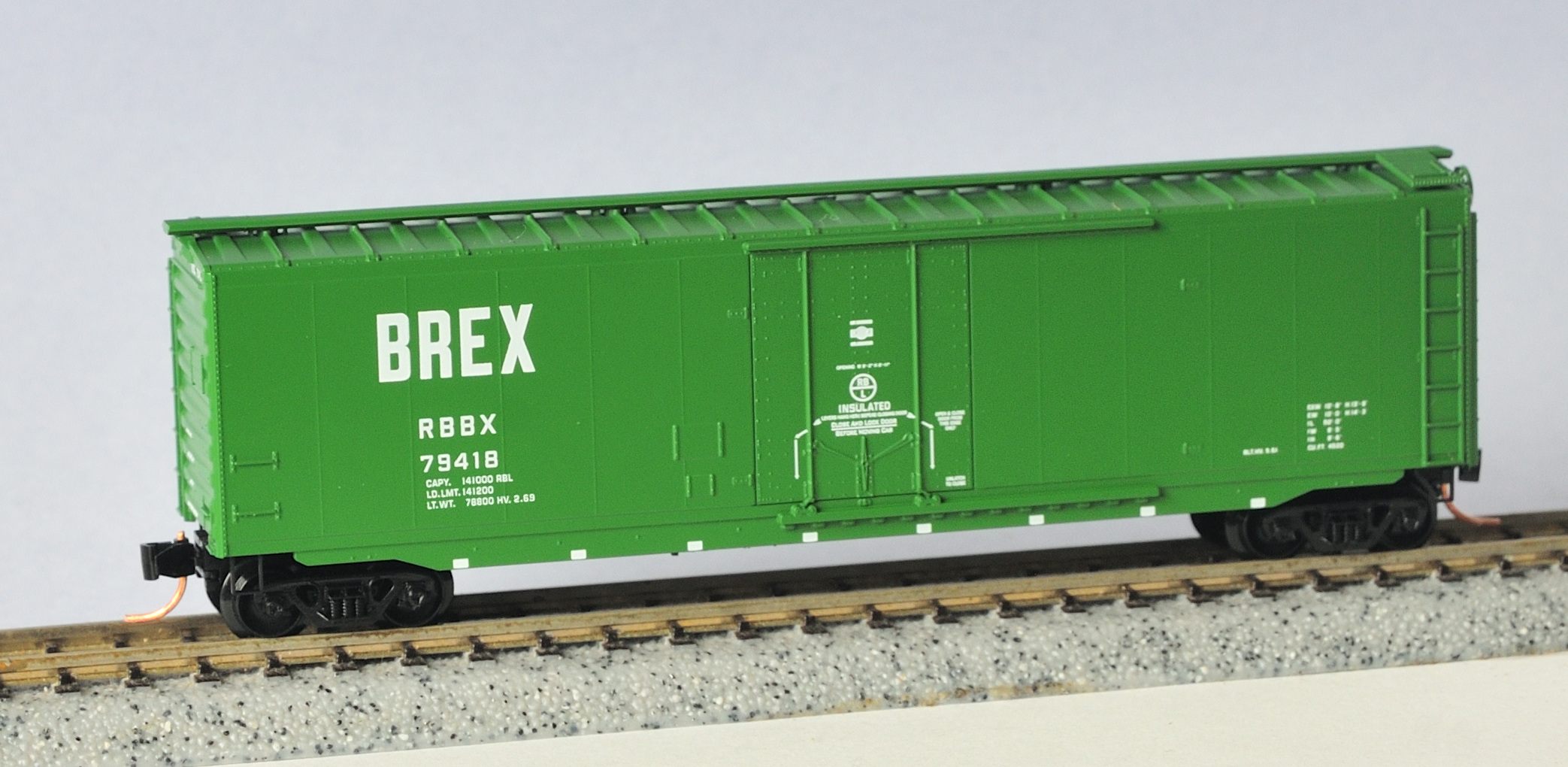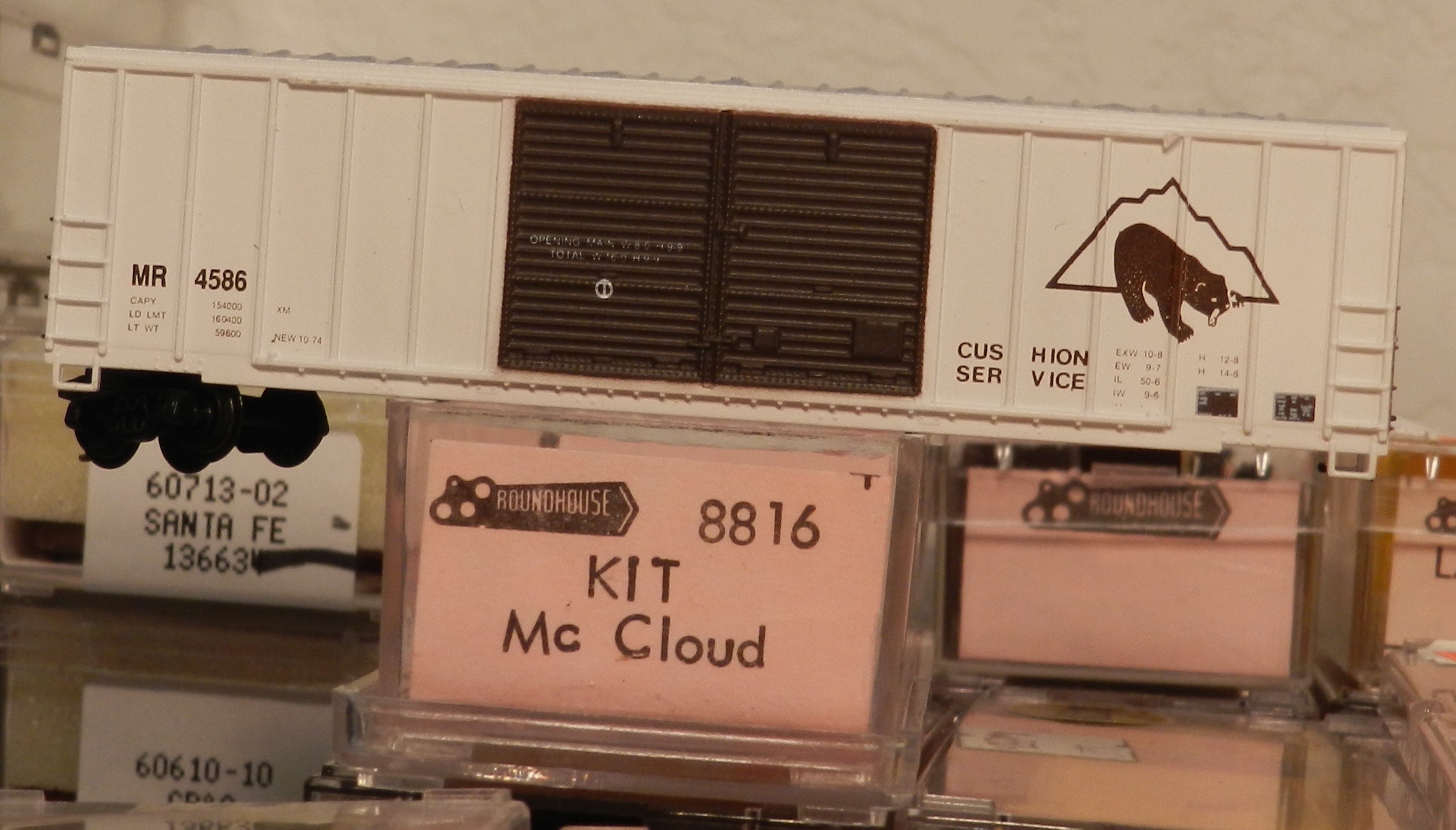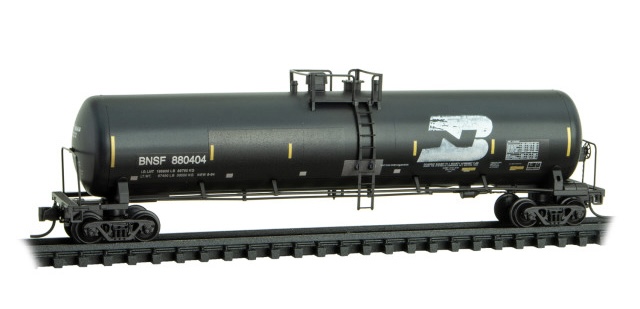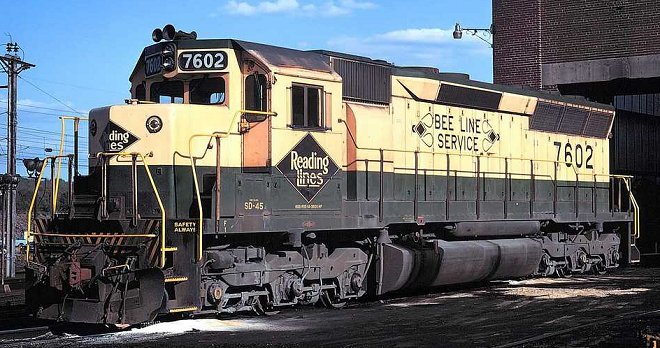Model Information: Kato introduced this '2nd generation" SD40 model in 1991. Later, in 1995, they started producing SD45s with the same mechanism. In 2002 they revised and re-released the SD40. In 2010 revised and re-released the SD45.
When it first came out, the Kato 1991 SD40 was considered very innovative for its time. The model features full pilots with body-mounted couplers. These models (both pre and post revision) run very well with excellent all-wheel pickup and drive. They are quiet and smooth running (though quite fast compared to new Atlas slow-speed mechanisms). They can really pull and handle fairly well on sharp curves. The key difference between the early and later version of the mechanism is the DCC support.
When it first came out, the Kato 1991 SD40 was considered very innovative for its time. The model features full pilots with body-mounted couplers. These models (both pre and post revision) run very well with excellent all-wheel pickup and drive. They are quiet and smooth running (though quite fast compared to new Atlas slow-speed mechanisms). They can really pull and handle fairly well on sharp curves. The key difference between the early and later version of the mechanism is the DCC support.
DCC Information: The early versions are considered DCC-friendly. The later revisions support drop-in decoders. I suspect that it is easier and cheaper to take one of the old shells and drop it over a new chassis than to try to convert an old mechanism to DCC.
Prototype History: Notable as the first locomotive with an engine larger than 16 cylinders upon its introduction in 1965, the EMD SD45 was used on nearly every railroad at one time or another. Over the course of six years, EMD built a whopping 1260 SD45 locomotives for freight use on more than 25 railroads, with many more acquiring them second-hand. The SD45, while sharing the same common frame as the EMD SD40, was distinguished by a number of characteristics such as the flared radiator that stretched across the side of the locomotive's long hood. Several SD45 locomotives are still preserved and in service today.
From Wikipedia
Read more on American-Rails.com
From Wikipedia
Read more on American-Rails.com
Road Name History:  Although they may be molded in color, unpainted and unlettered, undecorated products are marketed to modelers who seek to custom decorate their models for private roads and/or road and/or company names that were not commercially produced by any of the major manufacturers.
Although they may be molded in color, unpainted and unlettered, undecorated products are marketed to modelers who seek to custom decorate their models for private roads and/or road and/or company names that were not commercially produced by any of the major manufacturers.
Undecorated models are frequently also unassembled or only partially assembled and required modelers to be comfortable with glue, paint and sometimes solder in order to prepare their models for display. Materials for these models can vary but often include plastic, pewter and resin. Models may or may not come with decals or other decorations such as plastic signage, railings and ladders to enhance the appearance of the final product.

Undecorated models are frequently also unassembled or only partially assembled and required modelers to be comfortable with glue, paint and sometimes solder in order to prepare their models for display. Materials for these models can vary but often include plastic, pewter and resin. Models may or may not come with decals or other decorations such as plastic signage, railings and ladders to enhance the appearance of the final product.
Brand/Importer Information: KATO U.S.A. was established in 1986, with the first U.S. locomotive model (the GP38-2, in N-Scale) released in 1987. Since that time, KATO has come to be known as one of the leading manufacturers of precision railroad products for the modeling community. KATO's parent company, Sekisui Kinzoku Co., Ltd., is headquartered in Tokyo, Japan.
In addition to producing ready-to-run HO and N scale models that are universally hailed for their high level of detail, craftsmanship and operation, KATO also manufactures UNITRACK. UNITRACK is the finest rail & roadbed modular track system available to modelers today. With the track and roadbed integrated into a single piece, UNITRACK features a nickel-silver rail and a realistic-looking roadbed. Patented UNIJOINERS allow sections to be snapped together quickly and securely, time after time if necessary.
The Kato U.S.A. office and warehouse facility is located in Schaumburg, Illinois, approximately 30 miles northwest of Chicago. All research & development of new North American products is performed here, in addition to the sales and distribution of merchandise to a vast network of wholesale representatives and retail dealers. Models requiring service sent in by hobbyists are usually attended to at this location as well. The manufacturing of all KATO products is performed in Japan.
Supporters of KATO should note that there is currently no showroom or operating exhibit of models at the Schaumburg facility. Furthermore, model parts are the only merchandise sold directly to consumers. (Please view the Parts Catalog of this website for more specific information.)
In addition to producing ready-to-run HO and N scale models that are universally hailed for their high level of detail, craftsmanship and operation, KATO also manufactures UNITRACK. UNITRACK is the finest rail & roadbed modular track system available to modelers today. With the track and roadbed integrated into a single piece, UNITRACK features a nickel-silver rail and a realistic-looking roadbed. Patented UNIJOINERS allow sections to be snapped together quickly and securely, time after time if necessary.
The Kato U.S.A. office and warehouse facility is located in Schaumburg, Illinois, approximately 30 miles northwest of Chicago. All research & development of new North American products is performed here, in addition to the sales and distribution of merchandise to a vast network of wholesale representatives and retail dealers. Models requiring service sent in by hobbyists are usually attended to at this location as well. The manufacturing of all KATO products is performed in Japan.
Supporters of KATO should note that there is currently no showroom or operating exhibit of models at the Schaumburg facility. Furthermore, model parts are the only merchandise sold directly to consumers. (Please view the Parts Catalog of this website for more specific information.)
Item created by: Powderman on 2018-10-21 11:14:27. Last edited by CNW400 on 2020-07-15 15:12:22
If you see errors or missing data in this entry, please feel free to log in and edit it. Anyone with a Gmail account can log in instantly.
If you see errors or missing data in this entry, please feel free to log in and edit it. Anyone with a Gmail account can log in instantly.










